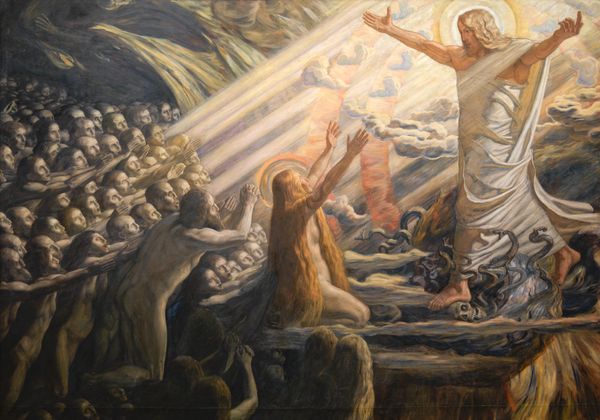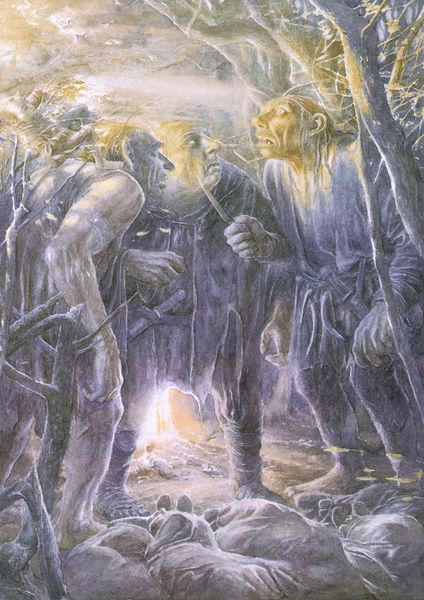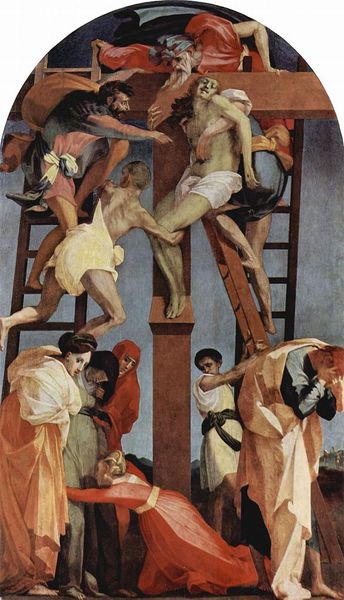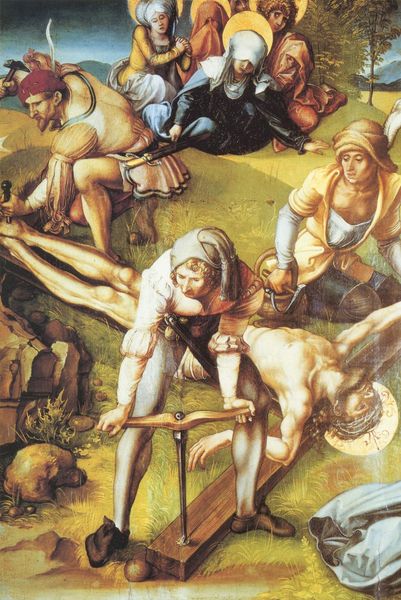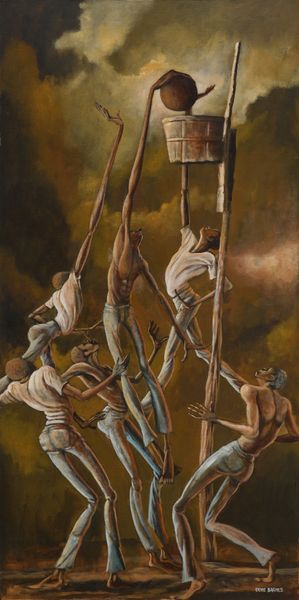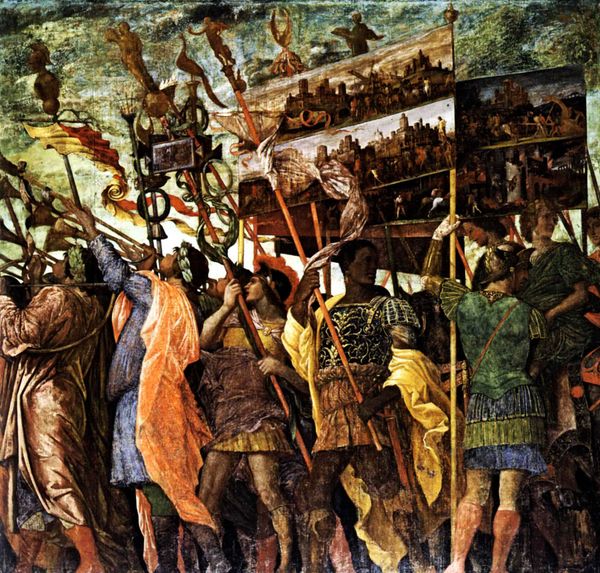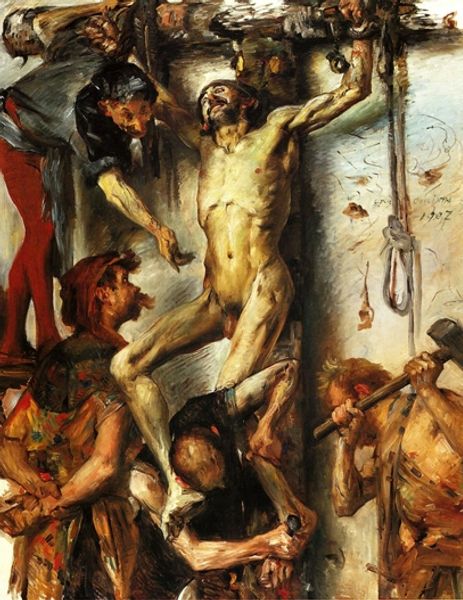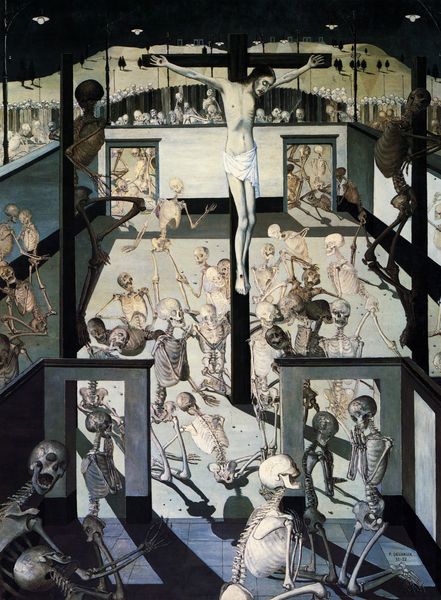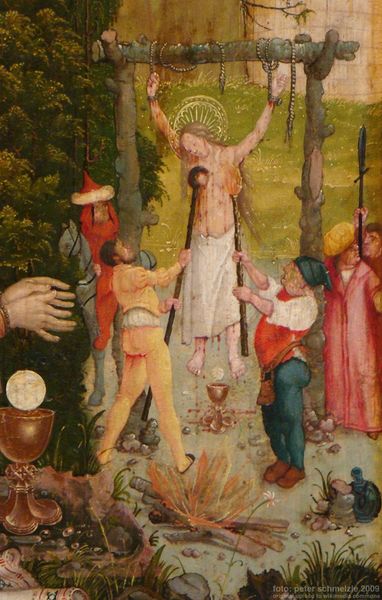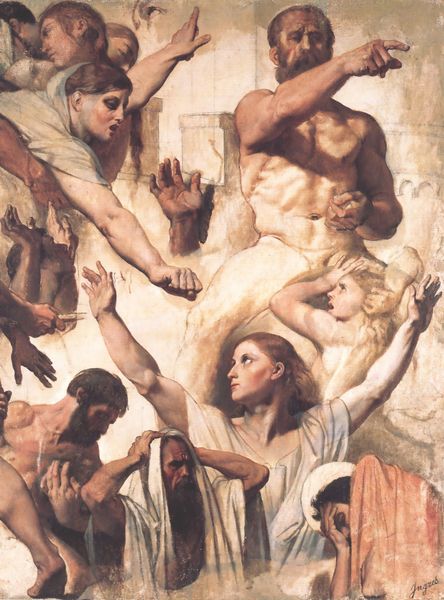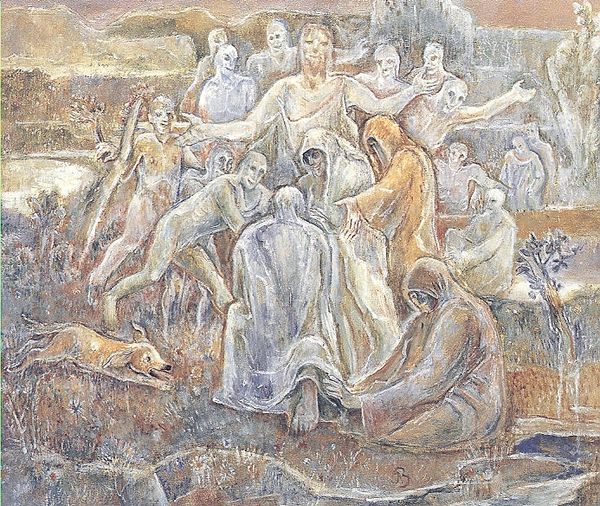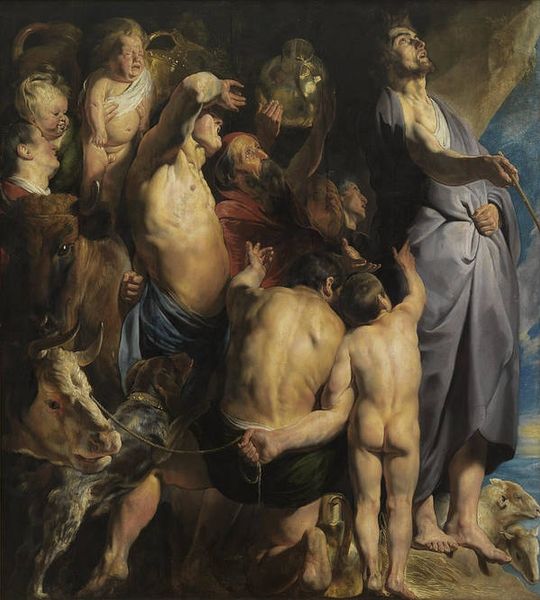
Dimensions: support: 1016 x 762 mm frame: 1203 x 946 x 84 mm
Copyright: © Tate | CC-BY-NC-ND 4.0 DEED, Photo: Tate
Editor: Michael Rothenstein's "The Crucifixion" presents a crowded scene rendered in muted colors. It's quite different from traditional depictions, feeling almost… contemporary. What symbols or interpretations stand out to you? Curator: The recurring motif of the ladder strikes me. It's a symbol of ascent, yes, but here, it’s an ambiguous path to salvation. Note how the figures interact with it—some helping, others seemingly indifferent. Does this reflect our complex relationship with faith and redemption? Editor: That’s fascinating! I hadn’t considered the ladder's dual nature. Thanks for pointing that out. Curator: The artist’s lens offers new perspectives through familiar stories. Keep exploring those symbolic doorways.
Comments
tate 6 months ago
⋮
http://www.tate.org.uk/art/artworks/rothenstein-the-crucifixion-n05046
Join the conversation
Join millions of artists and users on Artera today and experience the ultimate creative platform.
tate 6 months ago
⋮
This ambitious figure painting was exhibited at Rothenstein's first one-person show at the Matthiesen Gallery in 1938. It was one of several Biblical scenes in modern dress painted at that time, perhaps under the influence of Stanley Spencer. The elongated limbs and expressive faces of the figures are reminiscent of El Greco (1541-1614) who developed a personal mystical style of religious painting using distortion and sharp colour contrasts. From the late 1930s onwards, for a number of contemporary artists, the theme of the Crucifixion increased in significance as a metaphor for human cruelty. It was fully exploited in the aftermath of the Holocaust by artists such as Francis Bacon and Graham Sutherland. Gallery label, September 2004
